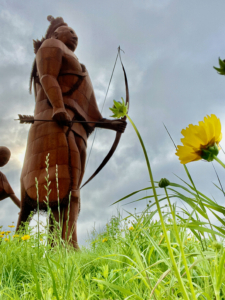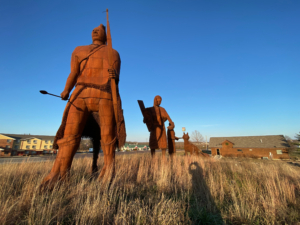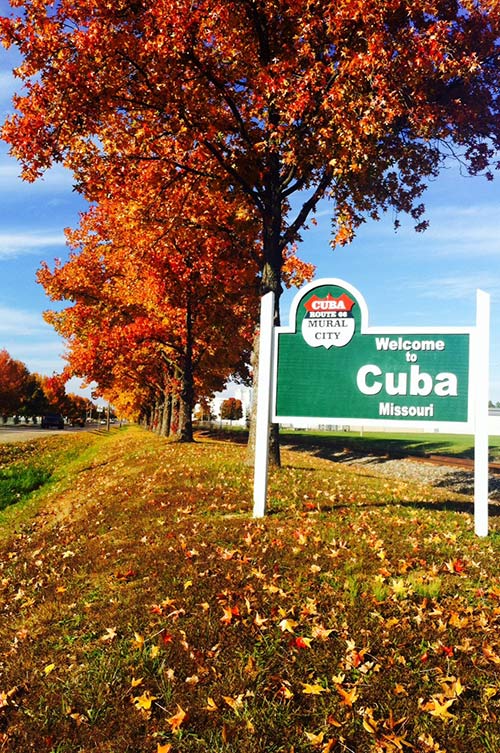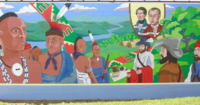Latest News
Route 66: Ancient Osage Trails
 When you think of the Wild West, there is usually an image of cowboys on saddled horses and natives riding bareback. But there was a time before horses in North America when the native people traveled on foot or by canoe.
When you think of the Wild West, there is usually an image of cowboys on saddled horses and natives riding bareback. But there was a time before horses in North America when the native people traveled on foot or by canoe.
Many of Missouri’s major highways, including Route 66, roughly follow ancient trails used by the indigenous people.
These roads have always followed the trail of the Osage Nation. The Osage, a prominent tribe in Missouri, made seasonal moves to hunt and gather for the group.
Famed Missouri Archaeologist Carl H. Chapman (born 1915 in Steelville, MO) reveals these indigenous societies were in the region as long as 12,000 – 14,000 years before the arrival of the Spanish, French, and English.
The early Osage tribes were believed to be a semi-nomadic prairie culture of hunters and gatherers. By the 13th and 14th centuries, native cultures began to decline and disperse. Over time, the Osage were known as the Wazhazhe or “children of the middle waters.” The French had difficulty pronouncing the name, therefore using Osage instead.
By the 18th century, the new nation maintained aspects of British imperialism and settler colonialism. To benefit the new empire, there was the need to build settler colonies. The plan would eliminate indigenous inhabitants to embrace westward expansion. The aftermath of the 1803 Louisiana Purchase accelerated the federal government’s use of treaties to reduce the indigenous populations and their land.
Once Missouri became a state in 1821 the work began to remove all indigenous tribes from the state. Governor Clark of Missouri gave directives to remove all Osage from Missouri based on the language of the 1825 Treaty.
As more settlers moved west of the Appalachian Mountains, eastern indigenous nations like the Fox, Kickapoo, Delaware, Shawnee, and Cherokee were forced to flee. At the same time, politicians in the midwest were moving the mid-western Native nations even further west into Oklahoma.
 During this expansion of the new nation, the Trail of Tears resulted from the Indian Removal Act of 1830. Signed into law by President Andrew Jackson, the Indian Removal Act authorized the president to grant lands west of the Mississippi in exchange for land occupied by native tribes. While a few tribes acquiesced, many resisted. Historians continue to explore the true devastation and inhumane treatment of the indigenous people. It is estimated that over 100,000 Native Americans were moved westward on the Trail of Tears, while thousands died during the journey.
During this expansion of the new nation, the Trail of Tears resulted from the Indian Removal Act of 1830. Signed into law by President Andrew Jackson, the Indian Removal Act authorized the president to grant lands west of the Mississippi in exchange for land occupied by native tribes. While a few tribes acquiesced, many resisted. Historians continue to explore the true devastation and inhumane treatment of the indigenous people. It is estimated that over 100,000 Native Americans were moved westward on the Trail of Tears, while thousands died during the journey.
The Osage traveled the Trail of Tears to southeast Kansas. By the time they negotiated the treaty of 1865 to purchase land in Oklahoma, the journey had […]
THE MURALS OF CUBA, MISSOURI

WHAT IS VIVA CUBA?
In 1984, Viva Cuba, Inc. organized with the goal of beautifying Cuba to attract new industries and jobs. Many groups and individuals worked together in the early days to landscape Highway 19 and make it a more attractive entrance to Cuba.
In 1987, Viva Cuba became the first Adopt-A-Highway site in the state Over the years, planting continued, cleanup projects went forward, banners took their places in the community, and in the ’90s the Viva Cuba Garden, which has been enhanced, became a part of the four-way Hwy. 19 and Route 66 intersection. These efforts continue with maintenance and further improvements.
In 2001, Viva Cuba implemented a major project of commissioning 12 outdoor murals by Cuba’s 150th anniversary in 2007. Organizations and individuals supported Viva Cuba’s efforts and helped the organization reach its goal. Today Viva Cuba maintains 14 murals and Cuba is known as “Route 66 Mural City”. Since 2012, Cuba has been a Tree City USA Community.


